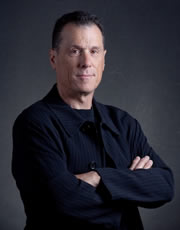 I spent three days last week directing a conference that focused on Jewish Identity in the Arts. As often does at such gatherings, the spectre of the Holocaust hovered over the proceedings and questions about (to quote Adorno) how one can make art after such evil crept into many conversations. The idea that there is a kind of universal language possible in art, a language that can speak to the horrors of war through beauty or through gesture or other tools of art-making is not a proposal I agree with. I am quite sure that suffering is personal not universal, that pain is individual and that beauty or any such remedy that art might provide is also specific and personal to each viewer. I am sure that most of us who have lived since the mid-century are aware of and have been affected by the constant and brutal truth of war in some way or another. Artists such as the Polish sculptor Magdalena Abakanowicz have had a particularly close-up view of those truths, if only by proximity.
I spent three days last week directing a conference that focused on Jewish Identity in the Arts. As often does at such gatherings, the spectre of the Holocaust hovered over the proceedings and questions about (to quote Adorno) how one can make art after such evil crept into many conversations. The idea that there is a kind of universal language possible in art, a language that can speak to the horrors of war through beauty or through gesture or other tools of art-making is not a proposal I agree with. I am quite sure that suffering is personal not universal, that pain is individual and that beauty or any such remedy that art might provide is also specific and personal to each viewer. I am sure that most of us who have lived since the mid-century are aware of and have been affected by the constant and brutal truth of war in some way or another. Artists such as the Polish sculptor Magdalena Abakanowicz have had a particularly close-up view of those truths, if only by proximity.

Alberto Giacometti Photo by Henri Cartier-Bresson
The art world is, of course, a microcosm of the world at large and not immune from the gravity of history or issues of mortality. The epoch of the “greatest generation” is coming to a close, and as we lose the post-war population to age, we are also, it seems, losing the major artists of the post-war era at an alarming rate. Last week Magdalena Abakanowicz, who “transformed sisal and burlap into brooding forms that evoked the weight of political oppression, the desperation of the individual and the sufferings of the natural world,” died at 86. The work of Abakanowicz touched me deeply from my first viewing; it was always and remains, deeply concerned with the human condition.

Scene from Waiting for Godot by Samuel Beckett
My father served in World War ll as a sailor. As a young man I paid little attention to his military life; it happened before I was born and he did not talk about it much. I had no context for his war other than my youthful pacifism, a by-product of the Vietnam War era, though I was not able to imagine the horrors of such service or what that degree of suffering could bring to an entire generation on either side of the conflicts that spread out across the globe. However, the artists who created post-warmodernism knew such horrors, many of them intimately. Growing up in Poland, Magdalena Abakanowicz watched the Germans invade her town in 1939, watched her father join the Polish Resistance, and watched as their house became a refuge for partisans and Jews; she saw her mother lose an arm to the the bullets of drunken soldiers and, after fleeing to Warsaw, witnessed the bloody fighting of the Warsaw Uprising where the then fourteen-year-old Magdalena Abakanowicz served as a nurse’s aide in an improvised hospital. “Memories of pain, death, and disfigurement would accompany her throughout life.” She finally landed in Germany in 1946 as the war came to an end.

Plecy/Backs by Magdalena Abakanowicz, 1967-80
Sartre haunts much of post-war art; the existentialist questioning that we find in Gicommetti’s elongated figures or the immanent questioning of Samuel Beckett’s Waiting for Godot and the gathered torsos of Plecy/Backs (1967-80) by Abakanowicz are all of a piece. Figures huddled together for warmth, comfort, community; waiting for what will surely come out of the collective pain and loss brought on by some unknown force. We can guess how this happened; what we cannot know is why it happened.
In Abakanowicz’ work we recognize the memory of such events and her objects, sculptures, drawings and installations crystalize post-war histories; not the universalist, generalized angst of abstract expressionism, but rather a personal evocation of trauma that was solely her own, for better or worse.
Douglas Rosenberg
